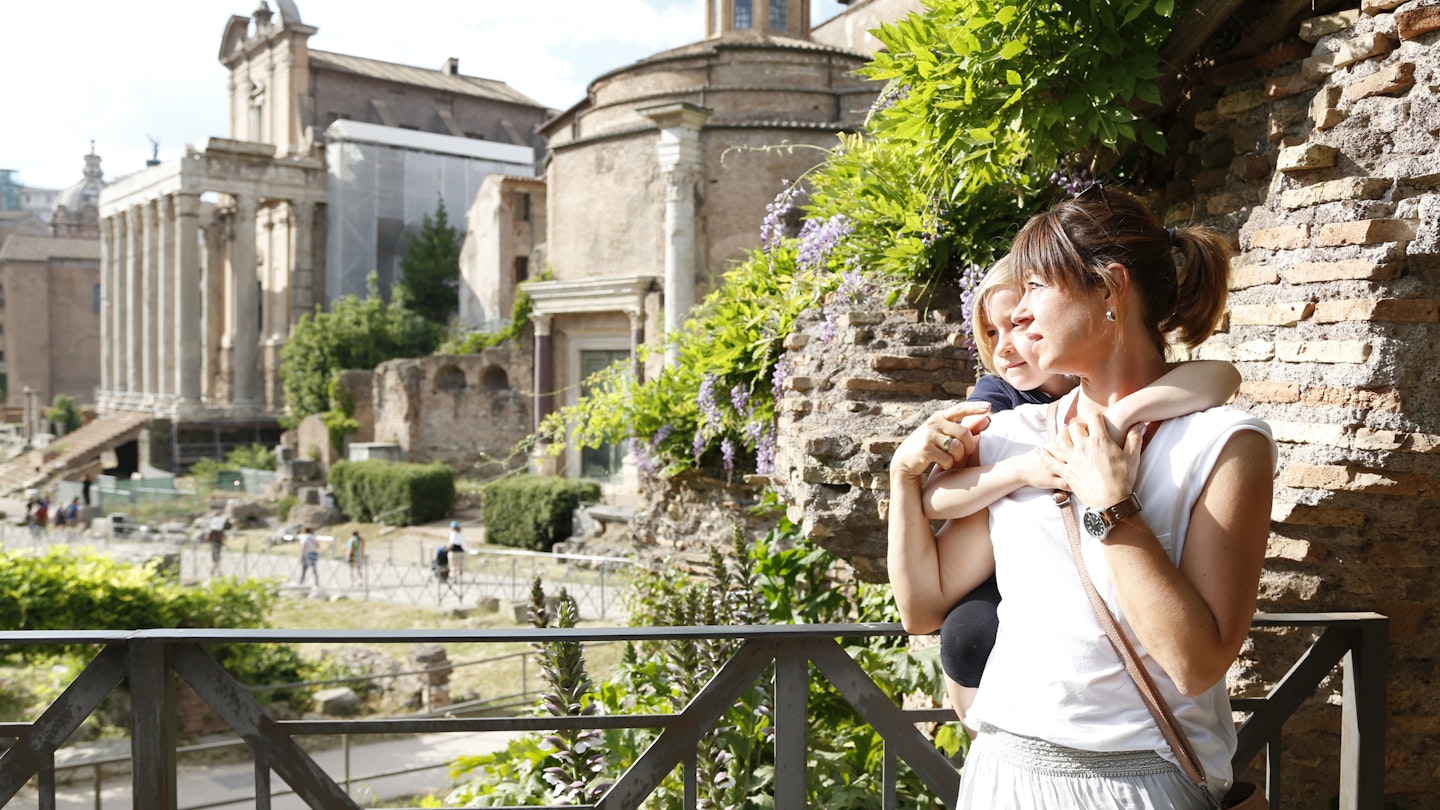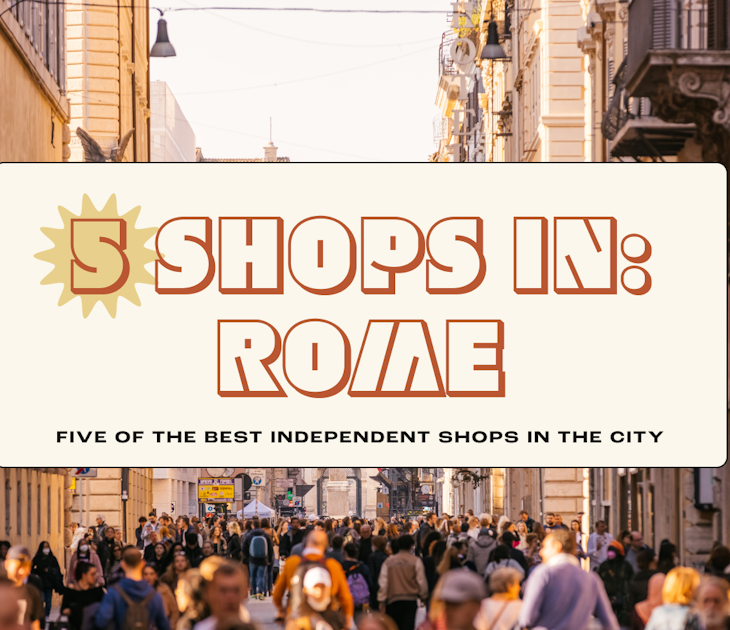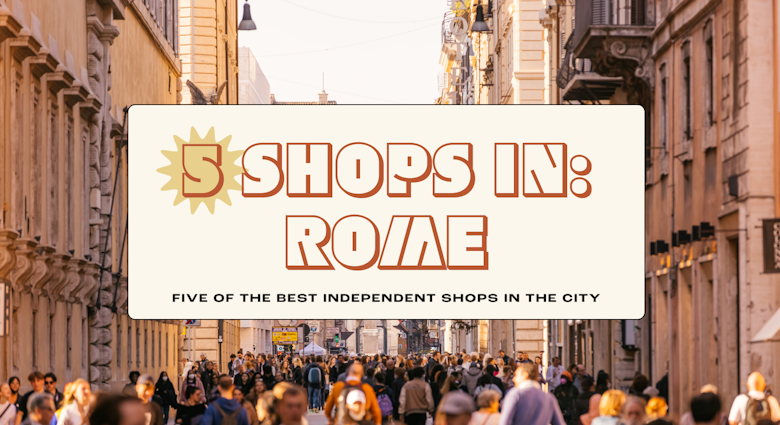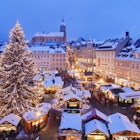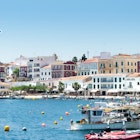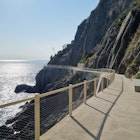Rome is a city where the doors of the art-laden churches are flung open to all, where ancient architectural wonders await around many corners, and it costs nothing to roam (pun intended) the historic streets, piazzas and parks.
A surprising number of the famous sights in Italy's magnificent capital city are completely free to visit, and we can show you how.
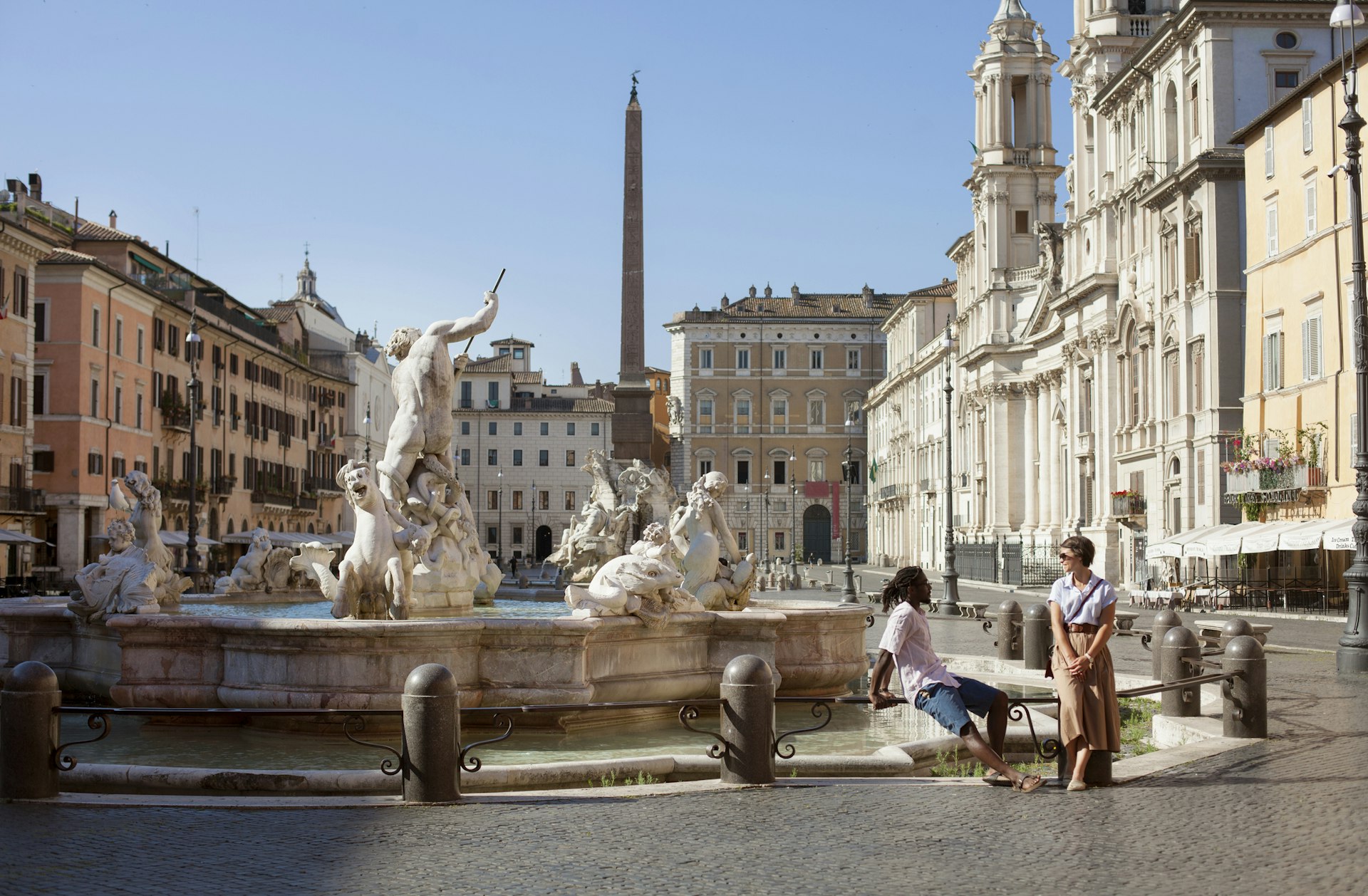
1. Admire the riches of St Peter's Basilica
And to be reminded where the power lies today, the city’s largest, richest and most spectacular basilica leaves all other churches in its shadow – and is completely free to enter.
There will probably be a line to enter Rome’s showstopping St Peter's Basilica, but after taking 126 years to build, maybe a little wait to see this opus isn’t so bad. St Peter’s Basilica is home to three of Italy’s most celebrated masterpieces: Michelangelo’s Pieta, his soaring dome and Bernini’s 29m-high (95ft) baldachin over the papal altar.
2. Watch the street artists on Piazza Navona
Come in the early morning before the crowds or after dark when the fountains, like Bernini’s iconic Fontana dei Quattro Fiumi, are illuminated to enjoy Piazza Navona at its most alluring. Or better yet, be there when it’s crowded to watch the street performers and tourists come and go and hang out until dusk.
Long a hub of local life in Rome, Piazza Navona hosted Rome’s main market for nearly 300 years. Now there is a Christmas market during the holiday season and plenty of activity year-round.
Planning tip: Need to quench your thirst? Fill your water bottle at the nasone (big nose) drinking fountain in the north of the piazza.
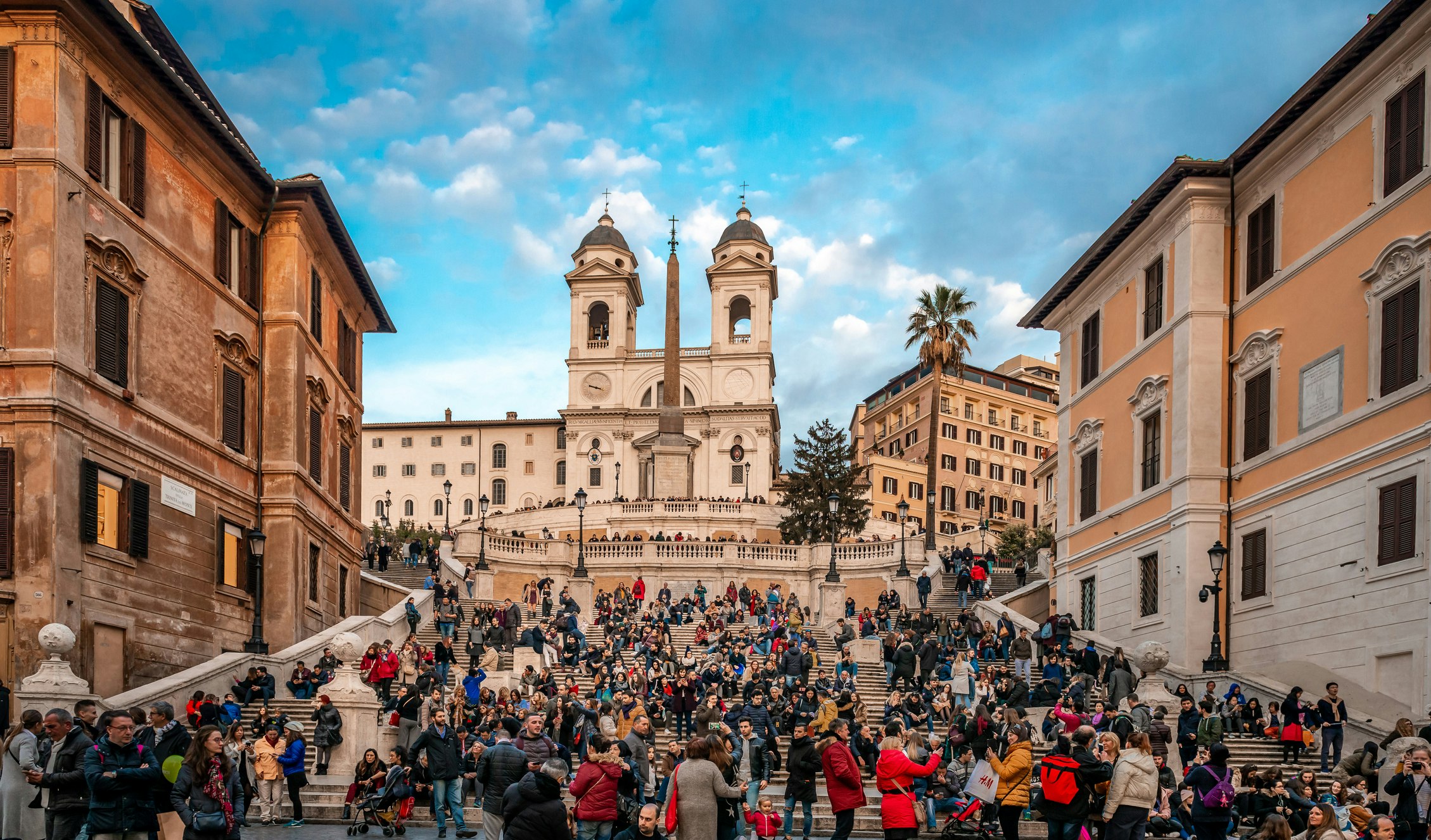
3. Climb the Spanish Steps to the Convent of Trinità dei Monti
People are no longer allowed to sit on the Spanish Steps, but you can still climb them. At the very top of the city’s most famous staircase perches Chiesa della Trinità dei Monti. Duck inside and take in spectacular works of art, including frescoes, an astrolabe and a duo of anamorphoses – wall paintings that appear to change entirely, depending on where you stand.
4. Toss a coin in the Trevi Fountain
The gorgeous, over-the-top, rococo Trevi Fountain depicts wild horses, mythical figures and cascading rock falls. It’s an unforgettable sight any time of day but particularly spellbinding after dark when it’s all lit up. According to legend, tossing a coin into the Trevi Fountain will ensure your return to Rome, making it a tourist rite of passage.
Planning tip: On an average day, about €3000 is chucked over shoulders into the water – but with all that money comes crowds of people, so don't be surprised to be jostling for space. It might be slightly quieter if you visit late in the evening.
5. Soak up the artistic vibes of Via Margutta
Take a stroll down the charming, ivy draped and prettily cobbled Via Margutta. Picasso worked at gallery No 54, and the Italian Futurists had their first meeting here in 1917. Frederico Fellini even lived here for a while. It was also where Audrey Hepburn and Gregory Peck rendezvoused in the silver-screen classic Roman Holiday (1953). It's truly picture-perfect.

6. Wander the paths of Villa Borghese
Locals, lovers, tourists, joggers – no one can resist the lure of Rome's most famous park. Villa Borghese is an oasis of shaded walkways, verdant corners and excellent museums to be explored. The lovingly landscaped Giardino del Lago features a copy of a Roman temple on the lake’s artificial islet.
Planning tip: For panoramic views of St Peter's, walk up Pincio Hill and head for the terrace.
7. Pay tribute in the Jewish Ghetto
The atmospheric Jewish Ghetto is studded with artisans' studios, kosher bakeries and popular trattorias. Dating back to the 2nd century BCE, this is one of the oldest Jewish quarters in Europe. While some Jewish people came as business envoys, most came as enslaved people.
As you stroll around, look for a series of brass cobblestones. These are memorial plaques commemorating the city’s Holocaust victims: each one names a person and gives the date and destination of their deportation and death. They are placed outside the victims’ homes.
8. Tip generously on a "free" walking tour
New Rome Free Tour runs daily themed walking tours of the historic center. The guides will lead you through the tightly packed tangle of cobbled alleyways, Renaissance palaces, ancient ruins and baroque piazzas, all the while narrating the deep and storied history of Rome. It's a theatrical experience.
Planning tip: Book your place in advance, and remember that while there's no charge for the tour, tips are expected at the end.
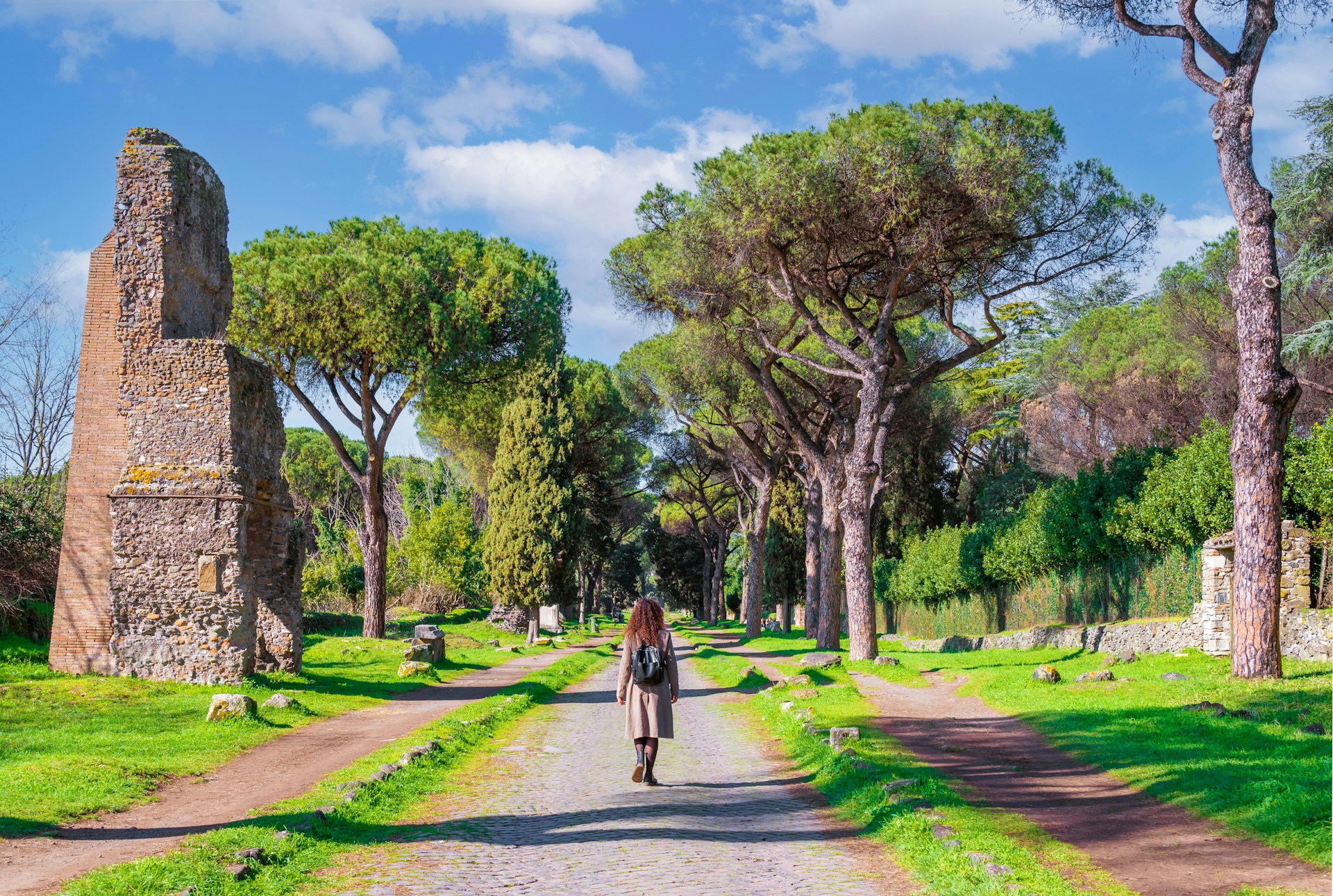
9. Explore the Via Appia Antica
Antiquity's most famous road, Via Appia Antica, has been an exclusive Rome address since 312 BCE. The most pleasant way to explore is on foot, making it perfect for a free experience. It's a beautiful cobbled thoroughfare flanked by grassy fields, Roman structures and towering pine trees. It was here that Spartacus and 6000 of his enslaved rebels were crucified, and it was here that early Christians buried their dead.
Planning tip: For more information and a map of the area, stop by the Service Center Appia Antica at the northern end of the road.
10. Find peace in Cimitero Acattolico
A verdant oasis of peace, Rome’s "non-Catholic" cemetery is imbued with a kind of Grand Tour romance. Up to 4000 people are buried here, including poets John Keats and Percy Bysshe Shelley.
As you wander among the gravestones, look for the Angelo del Dolore (Angel of Grief), a much replicated 1894 sculpture that US artist William Wetmore Story created for his wife’s grave.
11. Visit Bernini's masterpiece at Chiesa di Santa Maria della Vittoria
The roadside Chiesa di Santa Maria della Vittoria is the unlikely location of one of Italian baroque's great masterpieces: Bernini's Ecstasy of St Teresa. It's in the fourth chapel on the north side.
Planning tip: This stunning major artwork is best viewed in the afternoon, when it's bathed in soft natural light filtering through a concealed window.
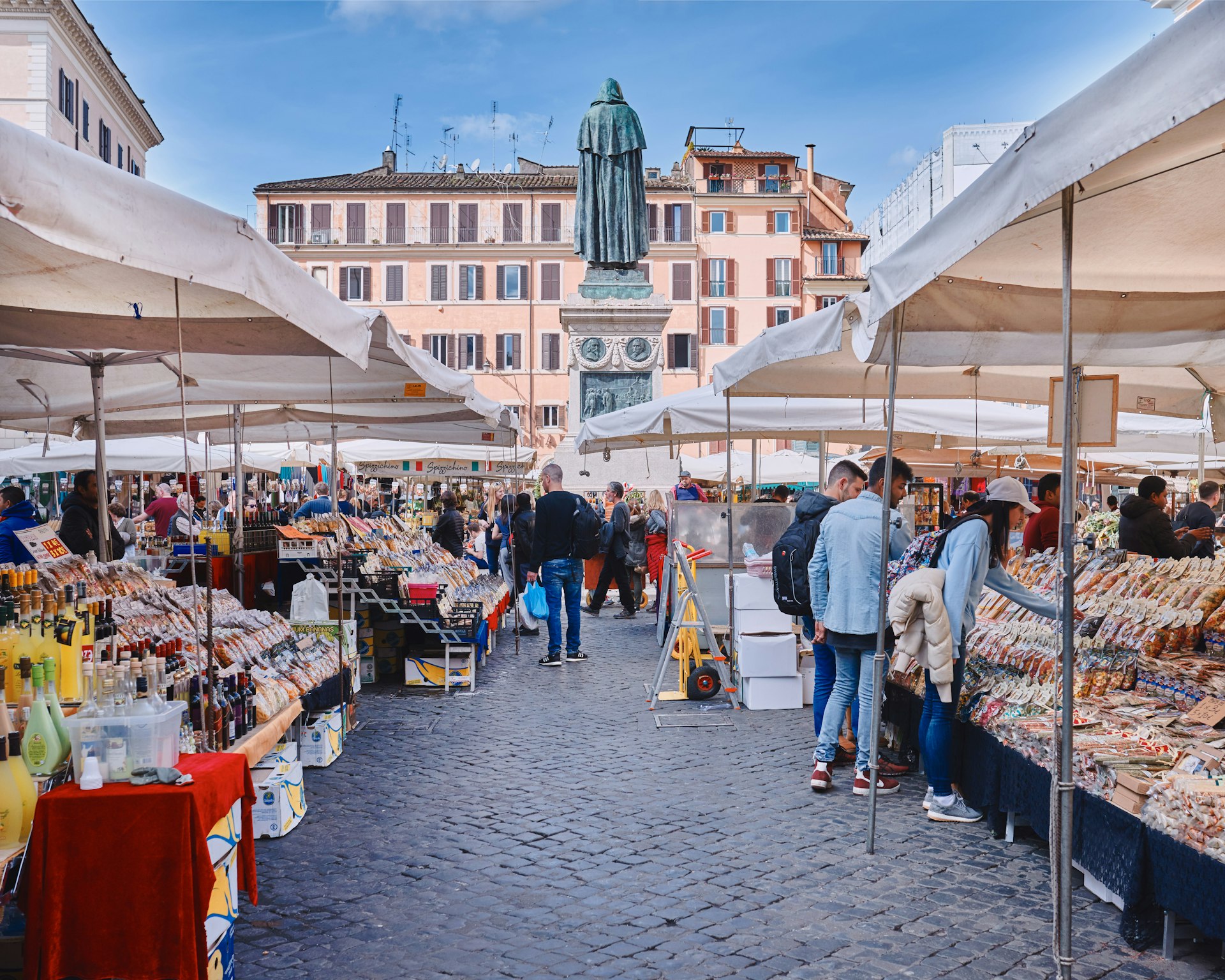
12. Browse the market at Campo de' Fiori
Colorful and always busy, Campo de' Fiori is a major focus of Roman life: by day, it hosts one of the city's best-known markets, and by night its bars and restaurants do a brisk trade. The piazza's poetic name (Field of Flowers) refers to the open meadow that stood here before the square was laid out in the mid-15th century.
13. Marvel at Renaissance architecture at Tempietto del Bramante
Bramante's tempietto (little temple) is considered the first great building of the High Renaissance. It is a perfect little surprise squeezed into the courtyard of the Chiesa di San Pietro in Montorio, on the spot where St Peter is said to have been crucified. Its classically inspired design and ideal proportions epitomize the Renaissance zeitgeist.
Planning tip: It's quite a climb up to the church, but it makes an ideal stop on a walking tour of Gianicolo. The tempietto is reached through the Spanish Royal Academy entrance to the north of the church. If you can get access to the academy’s upper level, there are magnificent views of Rome.
14. Find the hidden square through Arco degli Acetari
For one of Rome’s most picturesque scenes, head to this dark archway just off Campo de’ Fiori. The arch itself isn’t especially memorable, but go through it, and you’ll emerge onto a tiny medieval square enclosed by rust-orange houses and cascading plants. Cats and bicycles litter the cobbles while washing hangs off pretty flower-lined balconies overhead.

15. Head up to hilltop Piazza del Campidoglio
This hilltop piazza, designed by Michelangelo in 1538, is one of Rome's most beautiful squares.
Planning tip: There are several approaches to Piazza del Campidoglio, but the most dramatic is the graceful Cordonata staircase, which leads up from Piazza d'Aracoeli.
16. Learn about legends in Basilica di San Pietro in Vincoli
This 5th-century church was built to house the shackles of St Peter, which are displayed under the altar. But the real star of the show at Basilica di San Pietro in Vincoli is Michelangelo's muscular Moses, which has its own interesting legend involving a mistranslation and a purposeful "‘mistake."
Planning tip: The church is accessed via a steep flight of steps leading up from Via Cavour and passing under a low arch.
17. Peer into Villa del Priorato di Malta
You probably can’t go inside the Villa del Priorato di Malta, but head over to the Sovereign Order of Malta anyway and peek through the keyhole. You'll see one of Rome’s most celebrated views: St Peter's dome, perfectly framed at the end of a hedge-lined avenue.
18. Partake in the passeggiata
The passeggiata (traditional evening stroll) is a quintessential Roman experience. It's particularly colorful on the weekends, when families, friends and lovers take to the streets to strut up and down, slurp on gelato and window-shop.
Planning tip: To join in, head to Via del Corso around 6pm. Alternatively, watch the theatrics on Piazza di Spagna.
19. Marvel at religious artworks in Chiesa di San Luigi dei Francesi
Chiesa di San Luigi dei Francesi is home to three of Caravaggio’s earliest religious works, collectively known as the St Matthew Cycle. Embodying down-to-earth realism, they feature the stunning chiaroscuro – the bold contrast of light and dark – that the painter is known for.
Planning tip: Before you leave the church, take a moment to enjoy Domenichino’s faded 17th-century frescoes of St Cecilia in the second chapel on the right.
20. See atmospheric architecture in Quartiere Coppedè
One of Rome’s most extraordinary neighborhoods, Quartiere Coppedè was conceived and built by the little-known Florentine architect Gino Coppedè between 1913 and 1926. It's a fairy-tale series of palazzos with Tuscan turrets, Liberty sculptures, Moorish arches, Gothic gargoyles, frescoed facades and palm-fringed gardens, centering around the magnificent Piazza Mincio.
21. Visit the landmark Trajan's Column
The ancient landmark of Trajan's Column towers over the Imperial Forums. If you can make them out, the reliefs depict Trajan's military campaigns.
22. Attend the Pope's weekly address
The Pope holds a weekly audience in the Vatican on Wednesdays when he's in Rome.
Planning tip: Tickets are free but you need to request them and collect them in advance.
23. Some of Rome's best attractions are free at specific times
Time your visit just right, and you could be taking in some of Rome's very best paid-for sites for absolutely nothing at all. On the first Sunday of the month, the Colosseum, Palatino and Roman Forum are free to visit. The Vatican Museums can be visited for free on the last Sunday of the month.
24. Rome's May Day Concert is a free event
The May Day Concert on May 1 is a huge (and free) celebration in the city.
.jpg?auto=format&w=64&h=64&fit=crop&crop=faces&q=75)
